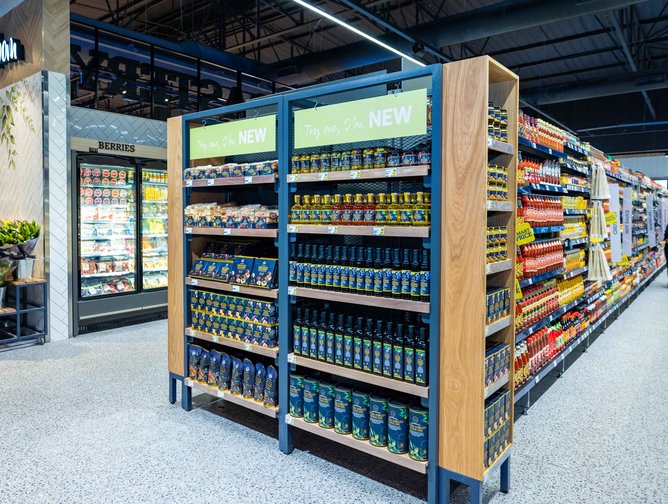How retailer Pick n Pay mastered its migration to the cloud
For countless companies, the process of moving their entire IT infrastructure to the cloud has the potential to be laborious, complex, and long-winded.
When it came to the Pick n Pay Group – one of South Africa’s biggest retailers – there was also the added pressure of the transition being the largest of its kind ever carried out in Africa. Nevertheless, having enlisted the services of Lemongrass based on its proven track record, Pick n Pay’s SAP systems have now been successfully migrated using AWS as its cloud provider.
Responsible for overseeing the architecture of this crucial project was Robert Heneke, Head of Cloud, SAP Technology and Development at Pick n Pay. Heneke, who has experience in various industries – including wool spinning, oil, and mining – joined the company back in 2007 when it had around 750 stores. Today, that figure stands at more than 2000.
Detailing the reasons for Pick n Pay’s migration and its decision to use AWS requires “a step back”, says Heneke, keen to show his technical working. Cutting costs was, as one might expect, a significant factor, but the firm had also reached an important crossroads where a big call needed to be made.
“About four years ago, we migrated our BW (SAP Business Warehouse) system to the cloud and, at that point, there weren’t a lot of hyperscalers around,” Heneke explains. “We chose AWS at that point in time, so we had some of a relationship with them.
“We went to the cloud for the whole of our environment because we used to have an on-premise data centre with a hardware supplier that would stock it with infrastructure such as servers and storage. They would always try to be one step ahead of the requirement curve so, when we required a machine, we would only pay for what we used.
“The problem was, that contract was nearing its end and we had to make a decision: whether we were going to extend the contract and be tied down for another seven years, or whether we would go for something else.
“We decided – as we already had a system in the cloud, had paid our school fees and understood how it worked – that it was a good option at that point in time. Then, when we started to crunch the numbers, it seemed like we could reduce our costs quite drastically. It was very appealing to us to try and get that as an outcome.”
Choosing a partner
Recognising the sheer magnitude of the task at hand, Pick n Pay’s tech specialists entered into a rigorous selection process – assessing eight companies across five months – in an effort to find the perfect partner to deliver the migration.
In the end, UK-based Lemongrass was the standout candidate and got the nod. “They were one of the few contenders that had real experience migrating SAP systems to the cloud, especially on AWS,” continues Heneke.
“They didn’t only do the migration for us, but eventually became our cloud operators as well. Much of our success around our cloud journey can be attributed to their skills and can-do attitude. I always find them willing to assist and be part of a solution, even when the responsibility is not within their area.”
A challenging first trimester
With a partner chosen in the form of Lemongrass, the project took around nine months for Pick n Pay. “It was fairly lengthy,” adds Heneke. “I was joking we all could have had babies in that time.”
The first job? List all the company’s individual systems and rank them according to requirements including CPU speed, memory, disc volume, disc I/O, and operating system type, before mapping them to the AWS environment.
All in all, the total number of systems to consider reached around 500.
“It sounds like something you can do over a cup of tea, but let me reiterate – it takes months to get right,” says Heneke, who sounds almost haunted by this stage of the process. “There's always something that creeps out of the woodwork. It’s a moving target because continuously new systems are created and other systems are decommissioned.”
Migration headaches
The migration itself was also far from straightforward.
While a number of Pick n Pay’s Microsoft systems could effectively be lifted and shifted across to the cloud, the retailer's SAP systems running on IBM AIX caused headaches. Legacy systems on AIX’s big endian couldn’t be backed up and restored to the little endian in the cloud, meaning the only option was to undertake an export-import exercise.
“When you have to do that for a 20-odd-terabyte database, it becomes quite a difficult challenge,” laments Heneke – though he also reveals that the hardest part was managing the integration, bearing in mind the hundreds of partners and suppliers within Pick n Pay’s working ecosystem.
“You have to imagine that all of your integration points now change to somewhere in the cloud. Partners and suppliers all want to communicate with your systems, so you have to coordinate your efforts with them in cutting over.
“We had an integration catalogue that we lived and died by, and it worked very well for us.”
Cloud latency largely a ‘non-event’
Cloud latency was, quite rightly, a big cause for concern prior to the migration. When Pick n Pay wanted to move over to cloud computing, the nearest hyperscale data centres were more than 7,000 miles away in Europe.
However, for developers and users it was – as Heneke puts it – a “non-event”. Some disruption, for example, was only experienced in customer-facing and real-time applications, especially scanners.
“Our distribution centres typically work with a lot of hand-held scanners and they can’t wait for those additional milliseconds,” adds Heneke. “Especially if the device is very chatty; multiple roundtrips between the server and scanner can add up to seconds in wait time.”
Ultimately, the solution was for AWS to create a data centre in Cape Town, allowing the smooth running of those crucial systems.
Heneke continues: “The question would be, ‘why don't you just do everything in Cape Town?’.
“It’s quite interesting that South African-hosted data centres are about 15% more expensive than the European ones. There’s probably a myriad of reasons for it, but I believe it’s because electricity is more expensive down here.”
A move worth making
Asked about the benefits of moving Pick n Pay’s IT infrastructure across to the cloud, Heneke can’t help but bring up an anecdote from a SAP conference he attended a couple of years ago.
“We were standing around and I said to this group of people, ‘Hey, we actually intend to go to the cloud with our whole environment’ – and I was made out to be mad,” he recalls.
While this story is told in modest fashion, there must surely be a hint of ‘I told you so’ in Heneke’s mind? In practice, the move has been a “real success story”, allowing Pick n Pay to reduce its infrastructure, operating, and support costs by an enormous 40%.
Another huge bonus provided by the cloud is the ability to easily scale up and scale down its systems. For years, the company’s main system was a non-Unicode SAP database – and, to progress to newer versions, Unicode encoding was required.
This meant exporting the 20TB database, a sizeable and expensive task given the need to double up on hardware. “With the cloud,” says Heneke, “we could just ramp up during the project, do the Unicode conversion, then scale down and all is well.
“For us, the flexibility that the cloud has given us has been phenomenal.”
What next for Pick n Pay?
The global retail market, in Heneke’s words, is in “quite a difficult place”.
From an IT point-of-view, however, the goal for Pick n Pay is to automate old support office processes through RPA and further invest in singular access across all of its platforms.
A digitalisation of the commercial function within the clothing business – to be led by American firm Blue Yonder – is also on the horizon, while SAP has requested that its clients move to the S/4HANA software over the next few years.
Clearly, a big part of Heneke’s job is to pre-empt future trends, thus he highlights the imminent need to invest in on-demand delivery, as opposed to the scheduled service.
He also points to industry cloud platforms and their ability to incorporate cloud services into a pre-integrated but customisable, industry-relevant solution.
Heneke says: “SAP has got offerings in that space, but we will still need to review whether it's going to be cost-effective and whether they can deal with our business processes.
“The company is over 50 years old, so it’s always difficult to change the business processes.”
It would almost be remiss of Heneke, a senior figure in the field of technological development, to not give ChatGPT a mention.
“It's on everybody's tongue at the moment and I'm sure it will be used within retail platforms in the future,” he concludes. “Open AI has done a great job in making AI accessible to the average Joe and creating a vibe around it.”






